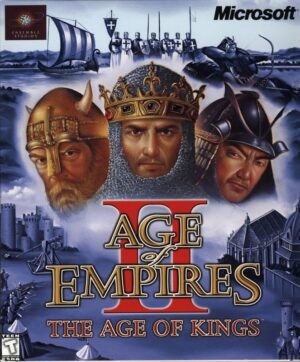Retro Replay Review
Gameplay
Jumpman’s core gameplay loop revolves around simple platforming and a unique rotation mechanic that breathes fresh life into classic puzzles. Your character can move left and right, leap across gaps, and interact with a handful of environmental objects. The twist lies in the ability to rotate entire sections of each level, flipping gravity and perspective in real time. This mechanic turns straightforward jumps into brain-teasing feats of timing and spatial reasoning, making each screen feel like a carefully crafted riddle.
As you progress, you’ll encounter larger challenges that require you to juggle falling giant yellow balls, avoid roaming enemies, and even manipulate bombs to clear new paths. Some stages mirror themselves multiple times, creating Escher-style corridors where you must plan your rotations ahead of time. Limited-rotation zones introduce a fresh layer of strategy, forcing you to commit to a path or risk being trapped.
Rather than presenting isolated stages, Jumpman lays out its levels within a seamless overworld, allowing you to glimpse distant puzzles from afar and plan your route through the game’s interconnected landscape. Unlimited retries and automatic saving encourage experimentation without punishment. For players eager to push beyond the main campaign, a sandbox playground and robust level editor let you design and share your own rotational challenges, extending the game’s lifespan indefinitely.
Graphics
Visually, Jumpman nails the retro charm of early eighties home computers, featuring crisp, low-resolution pixel art and a limited but vibrant color palette. Each tile and sprite feels lovingly hand-crafted to evoke the simplicity of Atari 2600 or Apple II titles, yet the animation is smooth and fluid, thanks to modern frame rates. This combination offers the perfect nostalgic hook without sacrificing clarity during fast-paced puzzle sequences.
The game’s signature feature—seeing upcoming levels stretching into the distance—relies on clever parallax scrolling and depth cues that turn a static puzzle into an immersive vista. Background elements subtly shift as you rotate the world, reinforcing the feeling of a cohesive, 3D environment built from 2D art. Even when you’re focused on timing a jump or redirecting a rolling sphere, the layered visuals add a sense of scale and wonder.
UI elements and on-screen indicators remain clean and unobtrusive, allowing you to focus entirely on the puzzle at hand. Bomb timers, rotation limits, and enemy trajectories are all clearly communicated through color coding and simple icons. Whether you’re crafting your own levels or diving into the main adventure, Jumpman’s graphics strike a perfect balance between nostalgic homage and contemporary design standards.
Story
Jumpman doesn’t adhere to a traditional narrative structure, and that’s part of its retro appeal. There’s no sprawling tale of warring empires or heroic destinies—just a faceless protagonist navigating a strange, modular dimension of platforms and puzzles. This minimal approach puts gameplay front and center, echoing the design philosophy of early puzzle-platformers where story was often an afterthought.
Despite its narrative simplicity, the game hints at a broader world through environmental storytelling. Distant level vistas change from serene pastel skies to looming industrial spires, suggesting a journey through varied biomes or even different eras. Occasional set pieces—like crumbling walls or malfunctioning machinery—add texture to the backdrop, implying unseen forces at work behind the scenes.
If you’re looking for character development or plot twists, Jumpman may leave you wanting. However, its sparse storytelling perfectly complements the puzzle design, allowing you to project your own motivations onto the blank-slate hero. In this sense, the world itself becomes the star, with every rotation and platform shift doubling as a small chapter in a larger, wordless saga.
Overall Experience
Jumpman successfully fuses retro aesthetics with modern design sensibilities, resulting in a puzzle-platformer that feels both familiar and innovative. Its signature rotation mechanic keeps each level feeling fresh, while the seamless overworld gives the game a sense of cohesion rarely seen in throwback titles. The difficulty curve is well tuned—early puzzles teach the basics gradually, and later stages demand real ingenuity without feeling unfair.
Replayability is one of Jumpman’s greatest strengths. The unlimited retry system ensures frustration never stalls progress, and the integrated sandbox playground and level editor empower creative players to build and share their own mind-bending scenarios. Whether you’re tackling community-created challenges or refining your own designs, there’s always another puzzle waiting around the corner.
For fans of classic puzzle-platformers seeking a fresh challenge, or newcomers eager to experience a stylish homage to early home computer gaming, Jumpman represents outstanding value. Its blend of nostalgic visuals, clever level design, and robust user-generated content guarantees countless hours of play. If you enjoy thoughtful platform puzzles and want to dive into a world where perspective is everything, Jumpman is well worth your time.
 Retro Replay Retro Replay gaming reviews, news, emulation, geek stuff and more!
Retro Replay Retro Replay gaming reviews, news, emulation, geek stuff and more!









Reviews
There are no reviews yet.